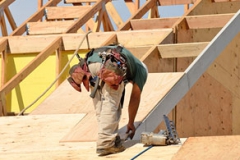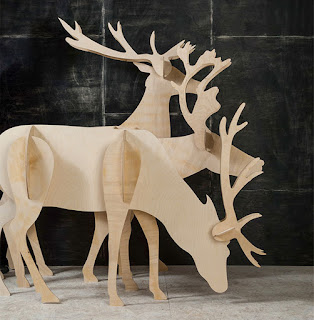Difference between Structural and Non-structural Plywood
Type of Glue or Bonding
Plywood is basically wooden panels that are glued together with adhesive. These veneers are manufactured for resistance and light weight. The difference between structural and non-structural varieties depends on the type of glue or resin. The market experts categorise the product on the basis of standard criteria.
Strength, reliability, and versatility of use are the hallmarks of good Plywood Melbourne experts can tell apart the different varieties based on the glue or bond. Those panels that meet structural standards have A-Bond. While the non-structural boards can be identified from their C-D bonding. Get the best products that are suited to your specific application.
Compare and Contrast
Cost
The cost of any product factors in manufacturing techniques and raw materials. Since, structured plies use the more expensive resins, they cost more. Go for non-structural panels if you want an economical solution. But make sure the wood is suitable for your specific application (ceiling, flooring, fittings, concrete, etc.,)
Performance
As the name suggests, Structural wood delivers higher performance and efficiency. It is extensively used around the world in construction projects. Its resilience and ability to assure long lasting service make it a clear winner. But sometimes, you just have to be functional, and non-structural panels are enough for such works.
Applications
Structural plies are treated well and graded highly for diverse applications. Its specific usage depends on the thickness and quality standards. Use it for stronger floors, beams, bracing and form works. The permanent structure is going to stand tall for a very long time. Just make sure you get high quality panels from the market.
Non-structural products include both internal and external Plywood Melbourne experts say it cannot bear higher loads or stress. But the material is suitable for achieving a beautiful, aesthetic finish. You can safely use the wood for ceilings, wall panels, and furniture. The low cost veneers can also be used for over boarding.
The cost of any product factors in manufacturing techniques and raw materials. Since, structured plies use the more expensive resins, they cost more. Go for non-structural panels if you want an economical solution. But make sure the wood is suitable for your specific application (ceiling, flooring, fittings, concrete, etc.,)
Performance
As the name suggests, Structural wood delivers higher performance and efficiency. It is extensively used around the world in construction projects. Its resilience and ability to assure long lasting service make it a clear winner. But sometimes, you just have to be functional, and non-structural panels are enough for such works.
Applications
Structural plies are treated well and graded highly for diverse applications. Its specific usage depends on the thickness and quality standards. Use it for stronger floors, beams, bracing and form works. The permanent structure is going to stand tall for a very long time. Just make sure you get high quality panels from the market.
Non-structural products include both internal and external Plywood Melbourne experts say it cannot bear higher loads or stress. But the material is suitable for achieving a beautiful, aesthetic finish. You can safely use the wood for ceilings, wall panels, and furniture. The low cost veneers can also be used for over boarding.
Key Selection Criteria
As mentioned above strength, thickness, resistance, and weight factors are crucial. Whether it is hard or softwood, you have to choose carefully. The panels should also be well engineered with reliable adhesives and finishes. Some of the other significant properties of the panels are listed here -
1.Grading
Know the specific grade of structured or non-structured Plywood Melbourne buyers should check on glue bond type and edge profiles. For non-structured panels, you can check the surface for face knots or CD grade. Structured wood has a bonding to resistant tough weather and temperature changes. It displays greater structural integrity without cracking.
2.Type Of Treatment
You can identify the non-structured sheets based on how they were treated. The surface is greenly tinged and has fillet marks. The ply boards are best suited for above the ground works. The structured plies are qualitatively superior in durability, strength and stiffness. It would be a waste if you use such best quality wood for hoardings, packages, or toys.
3.Limitations
Finally, Plywood is a product that is manufactured from raw materials. It is possible to have imperfections and inefficiencies due to various reasons. Opt for the branded structured panels and you can avoid incurring unnecessary losses. For non-structured boards, Check for surface flaws, edge damage, or core overlaps.
Be it structured or non-structured Plywood Melbourne's WoodPanels delivers the best. Our sustainable range will surely enrich your floors and buildings. Feel free to fill up the online form and request a sample. You can also reach us on phone, email, and social media.
1.Grading
Know the specific grade of structured or non-structured Plywood Melbourne buyers should check on glue bond type and edge profiles. For non-structured panels, you can check the surface for face knots or CD grade. Structured wood has a bonding to resistant tough weather and temperature changes. It displays greater structural integrity without cracking.
2.Type Of Treatment
You can identify the non-structured sheets based on how they were treated. The surface is greenly tinged and has fillet marks. The ply boards are best suited for above the ground works. The structured plies are qualitatively superior in durability, strength and stiffness. It would be a waste if you use such best quality wood for hoardings, packages, or toys.
3.Limitations
Finally, Plywood is a product that is manufactured from raw materials. It is possible to have imperfections and inefficiencies due to various reasons. Opt for the branded structured panels and you can avoid incurring unnecessary losses. For non-structured boards, Check for surface flaws, edge damage, or core overlaps.
Be it structured or non-structured Plywood Melbourne's WoodPanels delivers the best. Our sustainable range will surely enrich your floors and buildings. Feel free to fill up the online form and request a sample. You can also reach us on phone, email, and social media.



Comments
Post a Comment